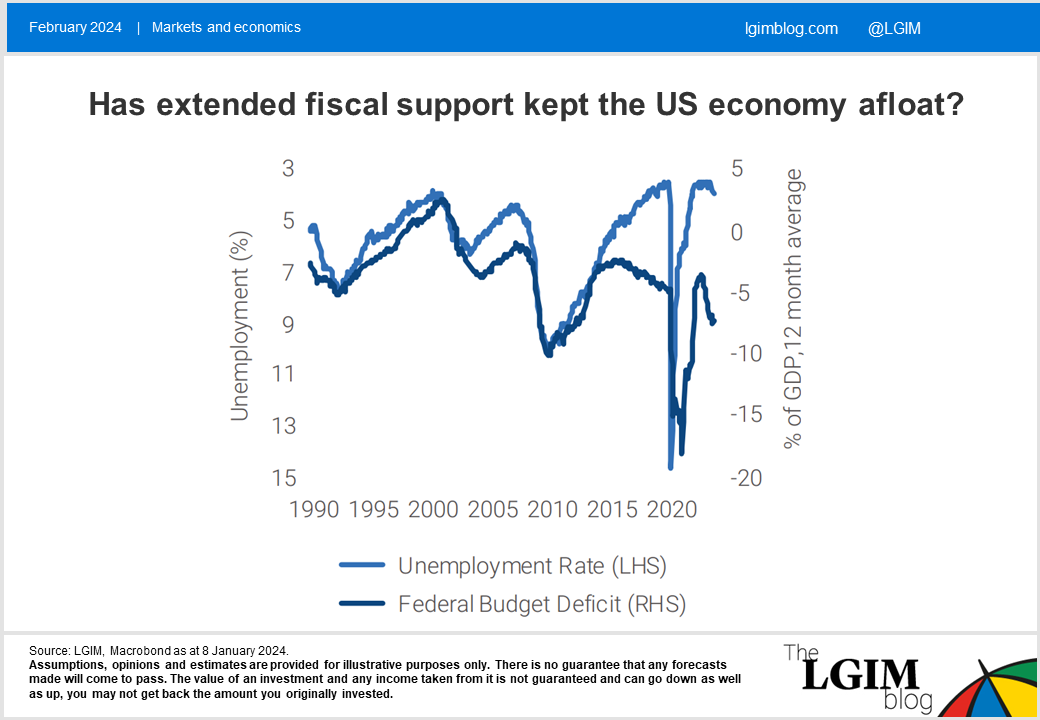Disclaimer: Views in this blog do not promote, and are not directly connected to any L&G product or service. Views are from a range of L&G investment professionals, may be specific to an author’s particular investment region or desk, and do not necessarily reflect the views of L&G. For investment professionals only.
Inflation – out of the woods yet?
Having fleetingly believed that inflation was yesterday's problem, should fixed-income investors be worried that it may be stickier than first thought?

The following is an extract from our Q1 Active Insights publication.
If there’s one thing us fixed-income investors don’t like, it’s inflation. And yet predicting the rate of inflation is probably the hardest thing to attempt. That’s particularly frustrating when the last time inflation was so volatile was during the late 1970s, in the aftermath of the oil-price shock.
Whether we like it or not, inflation is still one of the most powerful factors driving financial markets, and bond markets in particular. So, as we start 2024, the key question must surely be: Have we seen the back of higher inflation, or will it rear its ugly head again as we move further into the new year?
The Fed pivot
Investors interpreted December’s pivot from the US Federal Reserve (Fed) as a clear signal that the inflation problem had been contained. Initial reaction to the pivot was euphoric. Inflation numbers were on a downward trend, triggering the belief that interest-rate cuts would be orderly, and that a harsh recession would be avoided. But are investors putting too much faith in the Fed?
As we start the new year, we’re seeing stronger-than-expected data points, most notably in the form of US job numbers. And already we’re witnessing supply disruptions in the area around the Red Sea due to the conflict in the Middle East, with potential inflationary implications. In short, the more we see the market acting as if inflation were yesterday’s problem, the less comfortable we are, as a team, in holding large amounts of duration.
Growth or no growth?
The other key question for us is whether the US economy will slow this year – with or without a recession. From recent economic surveys we know that global manufacturing is in the doldrums, whereas the service sector, particularly in Western economies, is buoyant.
This may be a function of late-cycle indicators. As long as we have these, manifested largely through tight labour markets, economic models will continue to flag the risk of recession. However, we believe the probability of an impending recession, certainly in the first half of 2024, now looks less likely.

No reason for volatility to abate
Another area of complexity for the bond investor has been having to get used to volatile trading conditions. Already we’ve experienced two consecutive years of extreme fluctuations in bond prices. On this front, it’s important to distinguish between good and bad volatility. The latter centres largely around systemic risk when something goes wrong. But what we believe we are seeing now is good volatility, leading to potential opportunities for active managers.
A potential source of volatility comes from the fact that 2024 is a year dominated by elections – India, the UK and the US, to name but a few, all go to the polls this year. The period leading up to any election typically produces higher volatility as investors are forced to navigate through uncertainty.
Implications for investors
The rally witnessed in the last two months of 2023 has inevitably eroded some of the gains investors might have reasonably expected to materialise in 2024. While the soft-landing narrative is positive for risk assets, recent profit-taking aside, we believe that it is now mostly priced into financial markets.
That said, we believe the income component in fixed income still looks appealing relative to historic levels. This income may be boosted by investing in corporate credit, which is how we are strategically positioned. On the flip side, we believe the outlook for capital appreciation may be more uncertain over the coming months, given the extent of the rally in the latter months of 2023.
The above is an extract from our Q1 Active Insights publication.
Recommended content for you
Learn more about our business
We are one of the world's largest asset managers, with capabilities across asset classes to meet our clients' objectives and a longstanding commitment to responsible investing.

